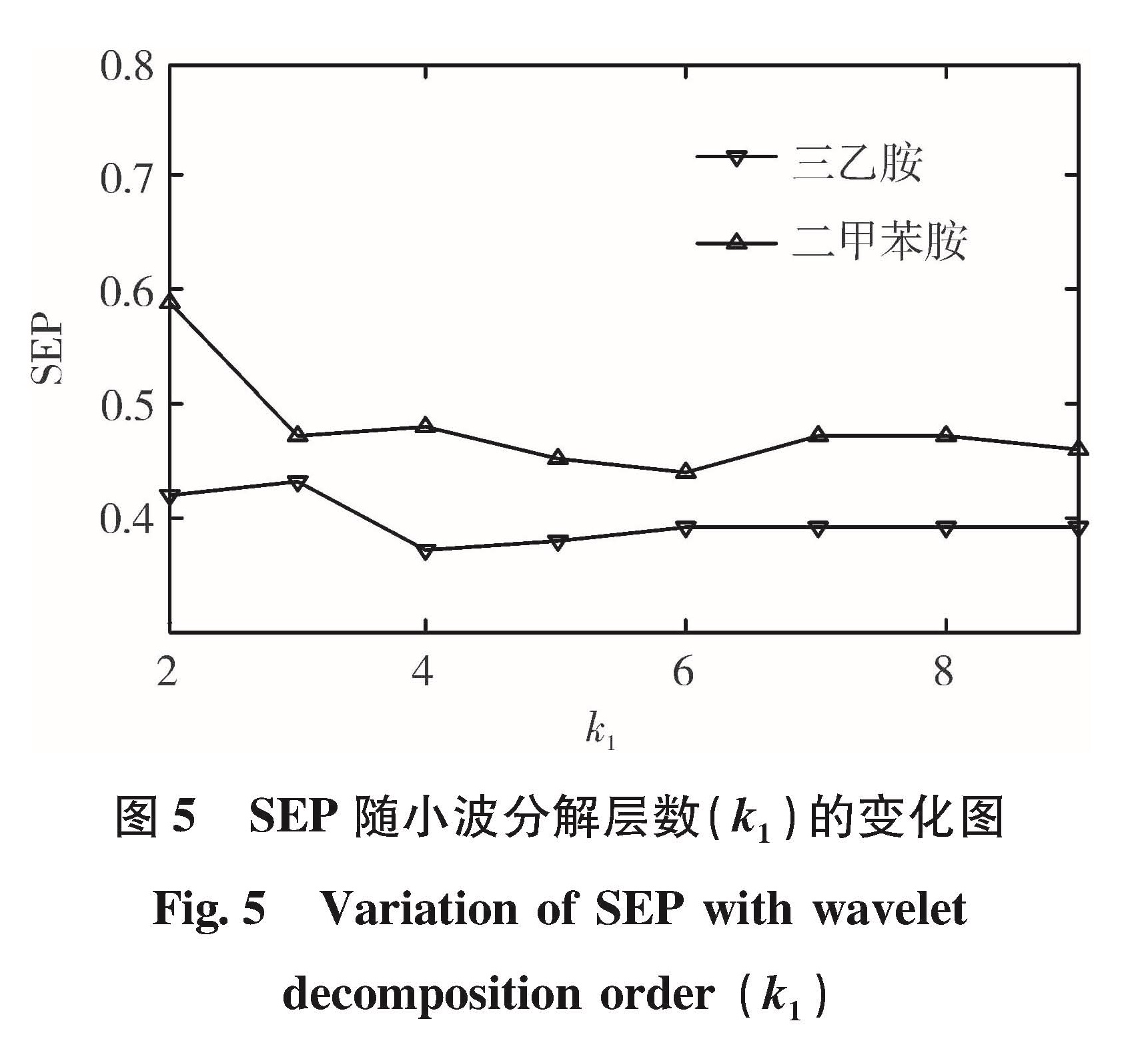作者简介: 王菊香(1971—),女,教授,研究领域为液体推进剂分析
备注
近红外光谱分析方法具有过程简单、快速、结果准确的特点。介绍了近红外光谱技术在液体推进剂质量检测中的应用情况,对光谱预处理、波段选择和建模方法进行了分析。通过平滑、微分、正交信号校正、小波变换等光谱预处理方法,可有效去除高频噪音、基线漂移等对信息提取的影响。近红外光谱是含氢基团的倍频吸收峰,根据待测组分的基团贡献选择合适的光谱范围建模,可简化模型,提高精度。偏最小二乘法是最常用的多元校正方法,对多数分析项目可建立准确的校正模型。对含量低,信息不丰富或受其他成分干扰严重的组分或性质可采用间隔组分偏最小二乘法和BP-神经网络法,以提高模型的准确度和预测能力。
Application of near-infrared spectrum(NIRS)spectroscopy in liquid propellant quality determination is introduced in this paper. The spectrum preprocessing, waveband selection and modeling method of NIR are analyzed. The influence of high frequency noise and base line drift on information extraction can be effectively eliminated by spectral pretreatment methods, such as smoothing, differential coefficient, orthogonal signal correction or wavelet transform. NIRS is absorption peak of frequency multiplication of hydrogenous radical. Modeling in right wavelength range which is selected according to radical contribution of component under determination can simplify the model and improve accuracy of the analytical result. Partial least square(PLS), a common multivariate calibration method, is often used to set up the accurate calibration model for most analysis items. The interval partial least squares(iPLS)algorithm and BP artificial neural network(ANN)algorithm can be adopted for some components with low content and not abundant information or the components which are seriously disturbed by other components to improve the accuracy and predictive ability of calibration model.











